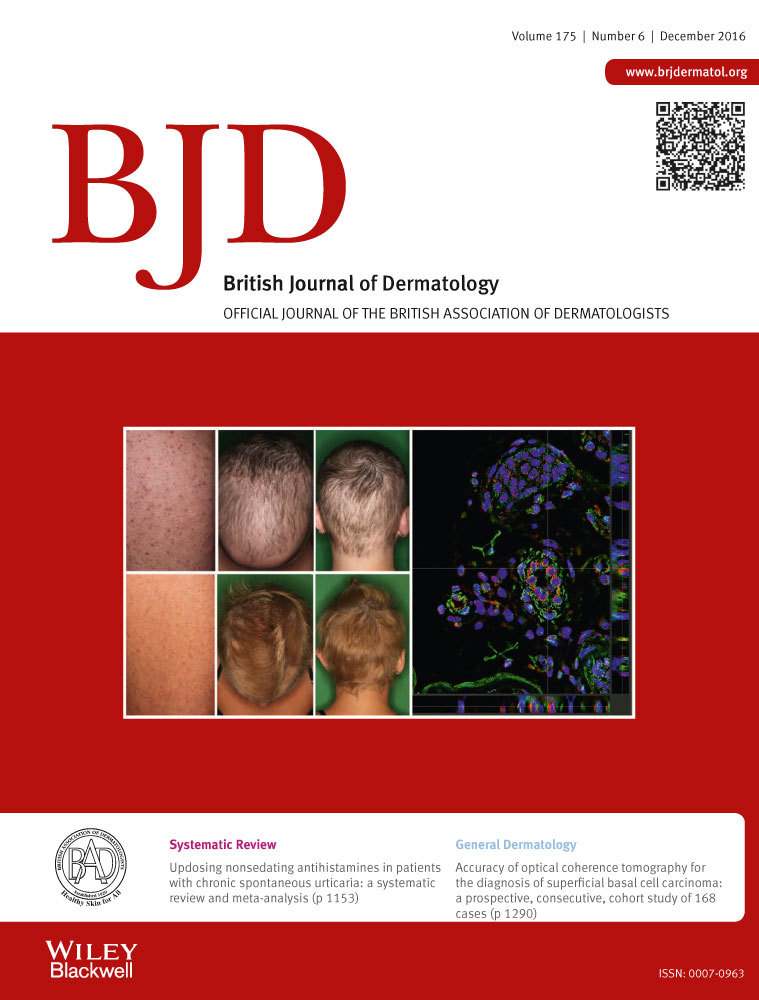Risk of skin cancer in patients on chronic haemodialysis: a nationwide, population-based study in Taiwan†
Plain language summary available online
Summary
Background
Patients on chronic haemodialysis (HD) have a higher incidence of cancer. However, the risk of skin cancer in this population has rarely been investigated.
Objectives
To investigate the risk of nonmelanoma skin cancer (NMSC) and cutaneous melanoma in patients on chronic HD and to explore the associated risk factors.
Methods
We performed retrospective cohort and nested case–control studies using records in the Taiwanese National Health Insurance Research Database between 1999 and 2013. The HD cohort included 79 668 incident patients on HD, for whom the standardized incidence ratios (SIRs) for incident NMSC and cutaneous melanoma were determined. In the nested case–control study, patients on HD with NMSC were matched to those without skin cancers. The impact of various factors on the development of NMSC was determined by conditional logistic regression analysis.
Results
Among the 79 668 patients on HD, 248 cases of NMSC and 22 cases of cutaneous melanoma occurred after a mean 4·95 years of follow-up. The SIRs for NMSC and cutaneous melanoma in patients on HD were 1·58 (95% confidence interval 1·39–1·79) and 1·44 (95% confidence interval 0·91–2·19), respectively. Of the patients on HD, a higher risk of NMSC was found in men (1·5-fold), South Taiwan residents (twofold) and patients with uraemic pruritus after long-term antihistamine treatment (1·53-fold). However, the incidence of NMSC was not increased in patients with uraemic pruritus receiving ultraviolet B phototherapy.
Conclusions
Patients on chronic HD are at higher risk of NMSC. Uraemic pruritus further increases the risk of NMSC, which might be prevented by ultraviolet B phototherapy.




